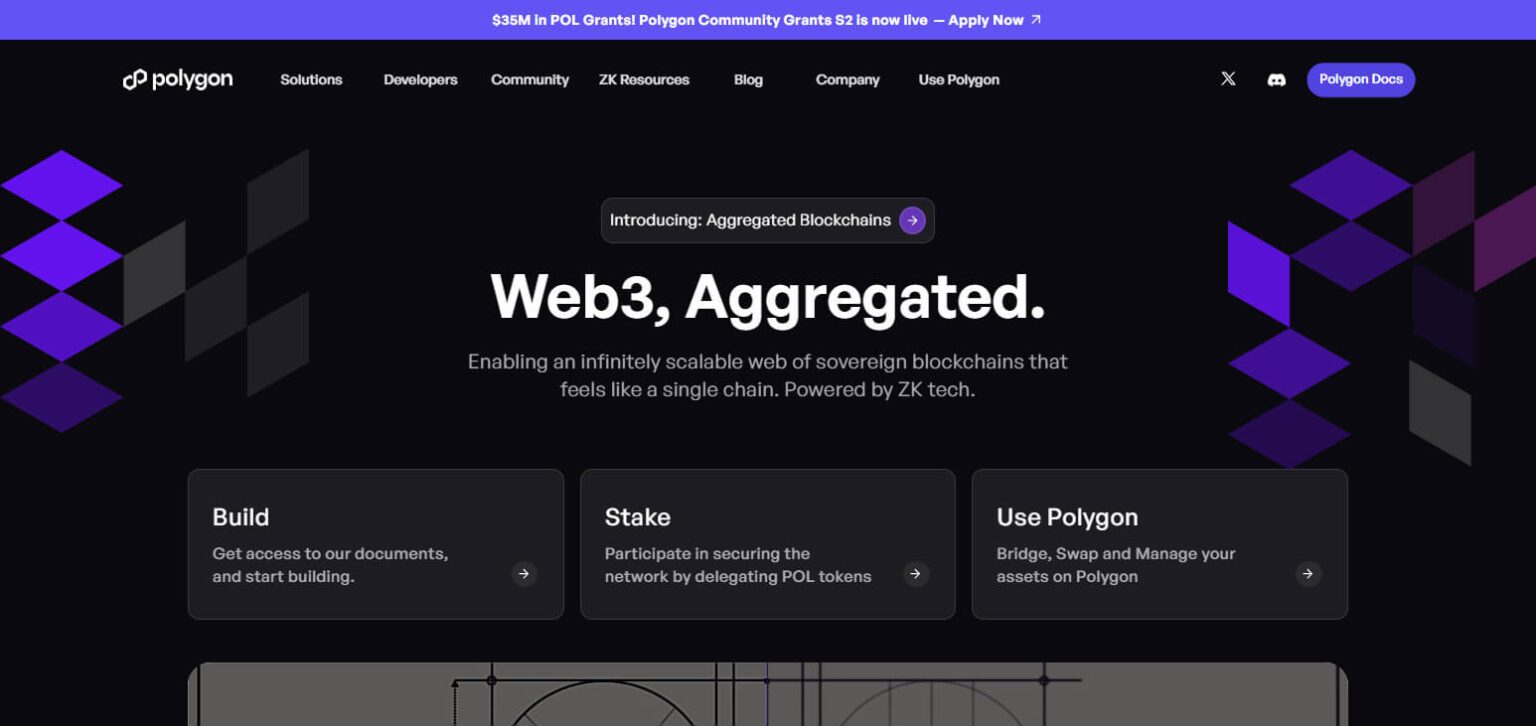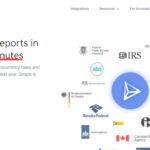In this article, I will discuss Polygon, an advanced blockchain scaling solution which is developed to enhance the functionality of the Ethereum network.
By concentrating on slashing transaction costs and boosting speed, Polygon increases scalability without compromising on the security of Ethereum.
I will examine the features it possesses, the use cases of it, and its influence on the development of decentralized applications and blockchain technology.
What is Polygon ?
Polygon (MATIC) is a multi-layered scaling solution for Ethereum with the goal to enhance its performance by solving the issues of high transaction fees and slow processing speeds.
Polygon’s sidechains reduce costs and increase speeds per transaction while providing the same level of security as the Ethereum blockchain. Polygon’s ecosystem is constructed to enable dApps which forms a vital part of the multitude of present and future dApps in the DeFi and NFT spaces.
Since Polygon is connected to various blockchain networks, the goal is to offer a seamless experience to developers and users while ensuring the growth of Ethereum – making it a scalable and easily usable solution.
Here’s an overview table for the Polygon Coin:
| Feature | Details |
|---|---|
| Name | Polygon |
| Symbol | MATIC |
| Launch Year | 2017 |
| Blockchain | Ethereum (Layer 2) |
| Consensus Mechanism | Proof of Stake (PoS) |
| Total Supply | 10 billion MATIC tokens (max supply) |
| Current Supply | 9 billion MATIC tokens (approx.) |
| Use Case | Scaling Ethereum, decentralized applications (dApps), decentralized finance (DeFi), NFTs |
| Main Network | Polygon PoS Chain, Polygon SDK, Polygon zk-rollups, and Polygon Hermez |
| Native Token | MATIC |
| Notable Partners | Decentraland, Aave, SushiSwap, Curve Finance, and many others |
| Market Rank (2025) | Top 20 cryptocurrency (based on market cap) |
How to Buy Polygon Crypto
In order to purchase the Polygon (MATIC) cryptocurrency, adhere to the steps below:
Step-by-Step Guide to Purchasing Polygon (MATIC)
Select a Crypto Exchange:
Choose an exchange which you find credible and which offers Polygon (MATIC) cryptocurrency. Some of the nameable exchanges include Binance, Coinbase, Kraken, and Gemini.
Confirm whether the exchange operates within your country and make sure it has a reasonable level of security.
Account Registration:
On the selected exchange, create an account. Input your email and create a complex password.
Check your inbox to find the confirmation email and click the link within it to verify your email address.
Make a Deposit:
Add a payment mechanism to your exchange account. This can be a bank account, credit card or any available means for payment.
Deposit funds into your account by selecting the deposit option. Type in how much money you wish to deposit.
Look for Polygon (MATIC):
Using the exchanges ‘search’ feature, look for Polygon (MATIC). Go to the trading pair which corresponds with the currency you have deposited (for example USD/MATIC or BTC/MATIC).
Placing an Order:
Confirm what type of order you wish to place. As a beginner, a market order is relatively easy because it allows you to buy MATIC at its current value.
Specify the amount of MATIC you want to purchase and check the transaction information. Confirm and submit your order.
Securing Your MATIC:
After finishing your order, MATIC tokens will be deposited into your exchange wallet. To increase the level of security, move your MATIC to a personal wallet like a hardware wallet (Ledger, Trezor) or a software wallet (Trust Wallet, MetaMask).
Following these steps enables you to easily purchase Polygon (MATIC) while also ensuring the safety of your investment. Do you have any questions or require assistance? Don’t hesitate to reach out!
Key Features of Polygon
Ethereum Scaling
Polygon scales Ethereum by adding sidechains and layer-2 solutions which increases the speed and reduces the cost of transactions without compromising security.
Low Transaction Fees
Polygon has lower transaction fees than Ethereum which is beneficial to developers and users alike.
Interoperability
Polygon enables seamless communication between Ethereum and other blockchains creating a multi-chain ecosystem.
Security
Polygon utilizes the Proof of Stake consensus mechanism which offers strong security and great scalability.
Developer Friendly
Polygon has powerful tools for building decentralized applications (dApps) such as its SDK and modular support for different programming languages.
Diverse Ecosystem
Polygon is a multi-faceted platform for developers and users as it hosts many different decentralized finance (DeFi) projects, decentralized apps, and non-fungible tokens (NFTs).
How will Polygon Ecosystem Token be used?
The token of the polygon ecosystem can be compared as an all-in-one tool within its network that allows people to easily fulfill a range of operations as well as services.
First off, the token is used for the distribution of income utility which is why it hugely dominates the token economy by contribution allocation distribution in the polygon ecosystem so that all people involved gets their benefit.
Its functionality can also be employed to collect fees or taxes of some sort. These financial dues may include transaction fees and service fees which can be critical for the ecosystem to maintain order and secure the infrastructure of the network.
Moreover, rewards are another major use case for the polygon ecosystem token. It supports various activities like staking where users receive the token in exchange for locking up their tokens to aid network operations. This mechanism not only strengthens the network but also promotes the concept of user engaging and long-term holding.
Aside from that, the token can be used as a means of exchange of services and initiatives like dapps, DeFi, NFTs, and other blockchain-based services for the polygon ecosystem to enable enhance the liquidity as well as the accessibility of the ecosystem.
Prior to making investments in cryptocurrencies, it is crucial for people to do their own research and analyze their financial situation. Because of its different and unpredictable nature, caution in participation and investment of digital assets is necessary.
How Safe is Polygon ?
According to Polygon, its powerful security features make it a secure platform for both users and developers. Polygon operates on Ethereum’s Layer 2 scaling solution which results in benefitting from Ethereum’s security infrastructure but also being more efficient.
Additionally, Polygon utilizes a Proof of Stake (PoS) system which allows for a higher amount of security as attacks are prevented by ensuring that only validators/ stakers can approve transactions.
Additional layers of security are also utilized by the network such as checkpointing and fraud proofs. But, like all other blockchains, users of polygon still need to be prudent and adopt applicable security measures like robust key management and safe wallet practices.
The most adopted scaling technology
Polygon PoS Live
Support the most widely used Ethereum scaling ecosystem that offers EVM compatibility and an ultimate user experience with fast transactions at near-zero gas fees today.
Polygon zkEVM Live
Unlock Ethereum scalability while maintaining security with the first ZK-rollup that offers EVM equivalence with fast transactions at near-zero gas cost today.
Polygon Miden Coming Soon
A decentralized rollup that leverages private data storage and local transaction execution. Because privacy scales better.
Polygon vs. Competitors
| Feature | Polygon | Optimism | Arbitrum | Solana | Avalanche |
|---|---|---|---|---|---|
| Ethereum Compatibility | ✅ | ✅ | ✅ | ❌ | ✅ |
| Scalability | ✅ | ✅ | ✅ | ✅ | ✅ |
| Low Transaction Fees | ✅ | ✅ | ✅ | ✅ | ✅ |
| High Throughput | ✅ | ✅ | ✅ | ✅ | ✅ |
| Security (PoS/PoW) | ✅ (PoS) | ✅ (PoS) | ✅ (PoS) | ✅ (PoH) | ✅ (PoS) |
| Interoperability | ✅ | ❌ | ❌ | ✅ | ✅ |
| Developer Ecosystem | ✅ | ✅ | ✅ | ✅ | ✅ |
| Transaction Finality | ✅ | ✅ | ✅ | ❌ | ✅ |
| Smart Contract Support | ✅ | ✅ | ✅ | ✅ | ✅ |
| Transaction Speed | ✅ | ✅ | ✅ | ✅ | ✅ |
Where Polygon Token Available
| Exchange | Trading Pair | Supported Features | Website Link |
|---|---|---|---|
| Binance | MATIC/USDT, MATIC/BTC | Advanced trading tools, staking, futures, spot trading | binance.com |
| Coinbase | MATIC/USD, MATIC/BTC | Easy-to-use interface, staking, secure wallet options | coinbase.com |
| KuCoin | MATIC/USDT, MATIC/BTC | Margin trading, staking, futures | kucoin.com |
| Kraken | MATIC/USD, MATIC/EUR | Advanced trading, staking, secure wallet options | kraken.com |
| Gemini | MATIC/USD, MATIC/BTC | User-friendly platform, staking, secure wallet features | gemini.com |
| OKX | MATIC/USDT, MATIC/BTC | Spot trading, futures, staking | okx.com |
Final Thoughts
In conclusion, Polgyon has proven to be a powerful scaling solution for Ethereum as it managed to tackle two of the biggest problems, which are high fees and slow transaction speeds.
From a user and developer perspective, its robust security, scalability, and favorable developer “ecosystem” is a big plus. Its interoperability among multiple blockchains and Polygon’s increasing footprint in DeFi and NFTs identify it as one of the key players in the blockchain industry.
Regardless of the many benefits it presents, customers need to be careful and take the necessary precautions when using the platform. All in all, Polygon is still a preferred solution for those who want to use dApps on Ethereum.









